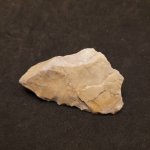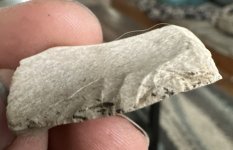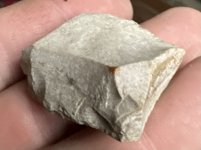TXCreekWalker
Jr. Member
- Apr 6, 2023
- 49
- 89
Hello again! Both of these were found in the same creek, but about 300 feet (its a wild guess) apart from each other. North Texas, Far north Dallas County almost near the Denton county line. Both are about 7 cm in length. This first one is somewhat thin, but the second one has some girth to it.
The first one looks like it saw quite a bit of use. It also has a stem that I am wondering might be a graver, or if this was how it was hafted, if it was a hafted piece.



This is the thicker one. It is a uniface, and it looks like it has a spokeshave opposite the cutting edge.





The first one looks like it saw quite a bit of use. It also has a stem that I am wondering might be a graver, or if this was how it was hafted, if it was a hafted piece.
This is the thicker one. It is a uniface, and it looks like it has a spokeshave opposite the cutting edge.











